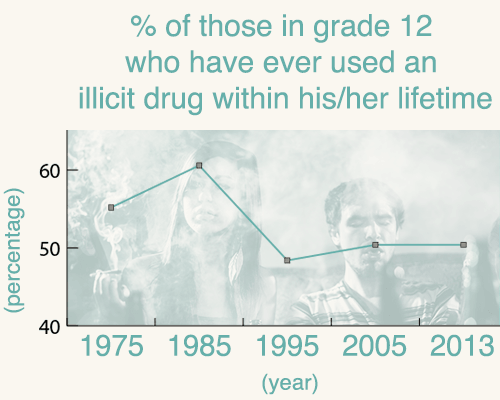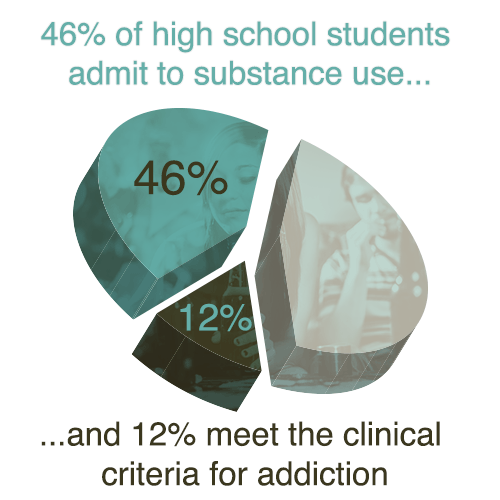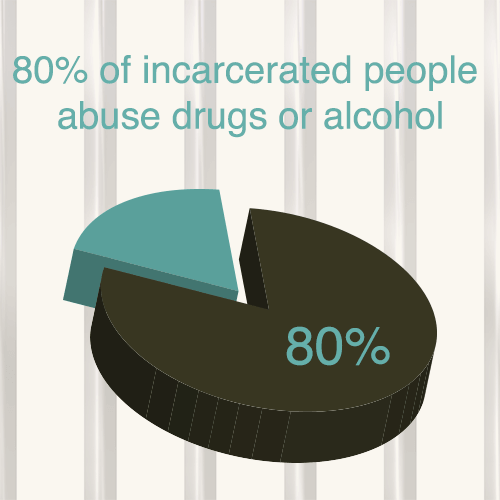
At one point, the term “adolescence” was meaningless. In the 1800s, families expected their young people to take on adult roles as soon as they were physically able to do so, regardless of whether or not the young person had any physical maturity at all. Parents didn’t need a term in which to identify the transition between youth and adulthood, as no such transition took place.
But researcher Philip Cohen began tracking the use of the term “adolescence,” and he determined that it began picking up popularity in the early 1900s.[1] People needed a word to describe that unique transition point, which seems to indicate that they were allowing their children to move more gracefully into adulthood. By the 2000s, the word was a common one.
Since the word is popular, most people have an inkling of what it means. During this transitional time, teens question authority, push back against the rules, and otherwise attempt to express their independence. By doing so, they hope to learn how to navigate the world as an adult.
Often, drug abuse is a part of that pushback. Unfortunately, those teens who do experiment can become teens who develop addictions. If that happens, a swift intervention is required, so teens can get the help they need in order to keep their families, and their communities, just a little safer.

Addiction Prevalence Over Time
Whether or not families have called the time between childhood and adulthood “adolescence” or something else altogether, most families have likely dealt with the idea of substance abuse in people who fall into this age group. That’s because it’s not at all uncommon for young people to experiment with drugs, and the number of teens experimenting has remained fairly consistent over time.
The numbers remain remarkably consistent from year to year, staying at about the halfway point. The types of drugs young people are trying are changing over time, as is the pattern with which young people take drugs.
This chart demonstrates the percentage of those in grade 12 who have ever used an illicit drug within his/her lifetime.[2]
Year |
Percentage |
| 1975 | 55.2 |
| 1985 | 60.6 |
| 1995 | 48.4 |
| 2005 | 50.4 |
| 2013 | 50.4 |

| Alcohol | Hallucinogens | Cocaine | Heroin | Amphetamines | |
| 1975 | 90.4 | 16.3 | 9.0 | 2.2 | 22.3 |
| 1985 | 92.2 | 10.3 | 17.3 | 1.2 | 26.2 |
| 1995 | 80.7 | 12.7 | 6.0 | 1.6 | 15.3 |
| 2005 | 75.1 | 8.8 | 8.0 | 1.5 | 13.1 |
| 2013 | 68.2 | 7.6 | 4.5 | 1.0 | 12.4 |
As this chart demonstrates, alcohol abuse rates have dipped dramatically from the 1970s to today, as has the rate of experimentation with almost every other type of drug. What might be changing, however, is the persistence with which teens take these drugs.
In other words, while teens in the 1970s might have tried a number of different drugs at least once, they may not have consistently abused those drugs to the point that they developed addictions. Research suggests that modern teens are developing persistent use, and it’s here that they might be facing real dangers.
Rising Addiction Rates

In a study of substance abuse among teens, CASA Columbia found something striking: 46 percent of high school students admit to substance use, and 12 percent meet the clinical criteria for addiction.[4] Those numbers seems to suggest that modern teens aren’t just trying out drugs for fun. They’re trying drugs, liking them, and developing addictions to those drugs.
That statement is easy to back up, too. Consider this: People who are addicted to a specific substance often can’t go for hours without taking that substance. They need it in order to feel healthy and happy. Without it, they feel ill.
It follows, then, that addicted teens wouldn’t be capable of going through an entire school day without taking drugs. And that, it seems, is exactly what’s happening.[5] These are the results of a 2012 study of the issue:
| Percentage of students who know of a classmate that uses substances during the school day | 86 |
| Percentage of students who know of a dealer operating at the school | 44 |
| Percentage of students that know of a good spot on the school grounds in which to use drugs | 52 |
| Percentage of students that report ease of substance use at school | 36 |
It seems that more and more teens just can’t get free of the need to use, and it seems that their schools don’t provide the incentives they need in order to resist the call.
Teens may not get the help they need from their parents at home, as few parents seem aware of the fact that an addiction is blossoming. For example, in a 2013 study, about 1 percent of parents said they thought their children might be abusing prescription stimulants.[6] But in a study of teens taken at a similar time, some 10-12 percent of teens admitted to this drug use.
Discrepancies like this could mean that parents think their children are healthy, happy, and sober. Teens could be doing all sorts of dangerous things without their parents even realizing that something is amiss.
Of parents who do recognize an issue, some don’t know where to go for help. In a 2013 study, only about 2.5 million of the estimated 22.7 million people ages 12 and up who needed addiction care got it at a specialized facility.[7] There could be many, many teens out there with addictions that are ignored, avoided, and untreated – and that could lead to big problems.
Impact of an Untreated Addiction

Even though experimentation might be a common part of the adolescent experience, and even though statistics suggest that more and more teens are developing addictions due to their experimentation habits, that doesn’t mean that addictions in teens aren’t dangerous. In fact, there are a number of very serious problems that have been linked to addictions in teens.
For one thing, many substances are illegal for young people to purchase, much less abuse. Substances like alcohol aren’t legal for use in adolescents, and illicit drugs like cocaine are never considered legal, no matter the user’s age. Drugs can be expensive to purchase, so people who want to abuse them often need to break the law in order to get money in order to purchase them. Since drugs and illegal behavior go hand in hand, it’s not surprising that researchers say some 80 percent of incarcerated people abuse drugs or alcohol.[8]
Similarly, drug abuse is often a behavior that isn’t sanctioned by society as a whole. That means teens who abuse often are forced out of their homes and their communities, and they can end up homeless. A 2009 study suggests that some 38 percent of people who are homeless are addicted to alcohol, and 26 percent abuse drugs.[9] The authors of this report state the problem plainly: “Substance abuse is often a cause of homelessness.”
That’s a serious risk for young people. Sadly, it’s not the only risk out there. The United Nations suggests that approximately 200,000 people die due to the effects of drug abuse across the globe each year.[10] Many of these people could be adolescents. It doesn’t have to be that way.
A Better Way
Most serious drug addiction consequences come about due to the long drug addiction careers teens follow. In a study of the issue, researchers found that addictions can average a 15-year time period.[11] During that time, teens experience criminal activity, which rises and falls, and they often dabble in other drugs, too. It’s a serious cycle that can be perilous for young people.
With treatment, teens can learn more about how to keep their cravings in check, and that could mean that they simply don’t experience all of the negative outcomes associated with addiction. They can get help right at the start of the substance use cycle, so it doesn’t translate into addiction. Without that translation, all of the other side effects might not occur, either. Families can make that happen.
By being aware, by speaking up, and by pressing the importance of addiction care, families can help to ensure that their teens don’t dive into a lifetime of addiction. Families can make sure, instead, that their teens do get better. And that could make the whole world just a little better.
After all, teens are remarkably susceptible to peer pressure, and research suggests that those teens who fall prey to peer pressure experience a wide variety of negative side effects, including an increase in depression and a decrease in the ability to function socially.[12] If fewer teens are using and abusing drugs, fewer teens would be pressured by their peers to do so. Fewer teens would struggle to transition into a happy adulthood, and fewer crimes would be committed.
It all starts with one family speaking up. How can you make it happen?
Citations
[1] Wade, L. (Feb. 23, 2011). “The Invention of ‘Adolescence.'” The Society Pages. Accessed Feb. 18, 2015.
[2] Johnston, L.; O’Malley, P.; Bachman, J.; Schulenberg, J.; Meich, R. (2013). “Monitoring the Future: National Survey Results on Drug Use, 1975-2013.” National Institute on Drug Abuse. Accessed Feb. 18, 2015.
[3] Ibid.
[4] “Adolescent Substance Abuse: America’s #1 Public Health Problem.” (June 2011). CASA Columbia. Accessed Feb. 18, 2015.
[5] “National Survey on American Attitudes on Substance Abuse XVI: Teens.” (August 2012). CASA Columbia. Accessed Feb. 18, 2015.
[6] Rettner, R. (May 20, 2013). “Not My Kid: Most Parents Unaware Teen Is Using Study Drugs.” LiveScience. Accessed Feb. 18, 2015.
[7] “Substance Use and Mental Health Estimates from the 2013 National Survey on Drug Use and Health: Overview of Findings.” (Sept. 4, 2014). National Survey on Drug Use and Health. Accessed Feb. 18, 2015.
[8] “Drugs and Crime.” (n.d.). National Council on Alcoholism and Drug Dependence. Accessed Feb. 18, 2015.
[9] “Substance Abuse and Homelessness.” (July 2009). National Coalition for the Homeless. Accessed Feb. 18, 2015.
[10] “Drug Abuse Kills 200,000 People Each Year: UN Report.” (June 27, 2012). Partnership for Drug-Free Kids. Accessed Feb. 18, 2015.
[11] Hanlon, T.; Nurco, D.; Kinlock, T.; Duszynski, K. (1990). “Trends in Criminal Activity and Drug Use Over an Addiction Career.” American Journal of Drug and Alcohol Abuse. Accessed Feb. 18, 2015.
[12]Allen, J.; Porter, M.; McFarland, C. (March 2006). “Leaders and Followers in Adolescent Close Friendships: Susceptibility to Peer Influence as a Predictor of Risky Behavior, Instability and Depression.” Development and Psychopathology. Accessed Feb. 20, 2015.


